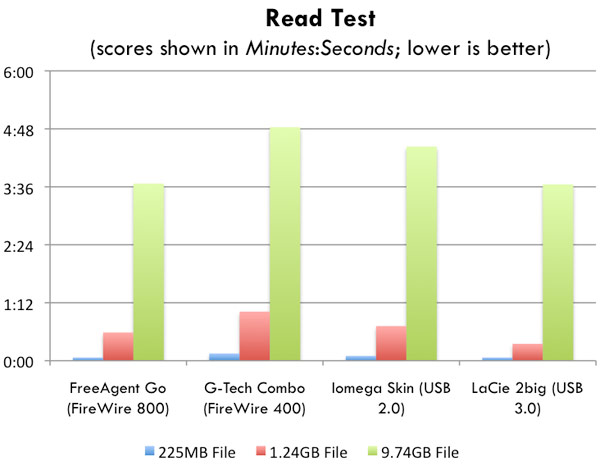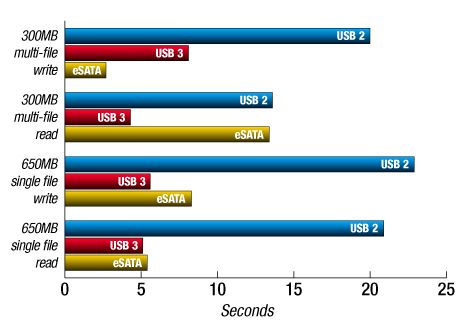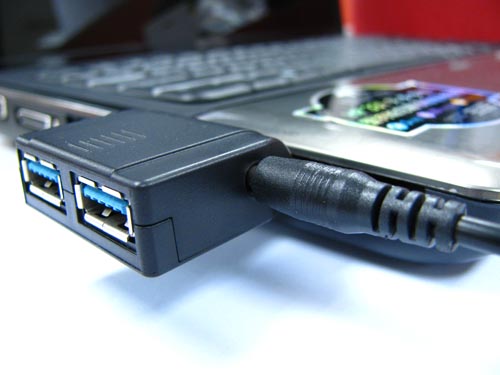Part 2 – USB 3.0 versus Firewire, eSATA and ExpressCard 2.0
Just as before, in the Part 1 of our comparison, we’ll try to be as brief as possible in comparing the USB 3.0 with the other popular computer interfaces, to present you just the facts and a few impressions.
USB 3.0 versus Firewire
The Firewire or the “forgoten” mass market high speed interface standard, was available in two main versions, the Firewire 400 and the Firewire 800. But as USB 2.0 grew in popularity, the Firewire lost the market. More so, even Apple, the inventor of the original IEEE 1340 Firewire interface, removed it from the iPods and, lately, from the mainstream MacBook laptops. An exception is making the lowest-end MacBooks, which is quite odd.
But in 2007, the Firewire 3200 or the S3200 was announced by 1394 Trade Association. This was a concept based on Firewire 800 and it is utilising the same cables and connectors. It came as a drop-in replacement as the components of the computer system were replaced. Today, S3200 has not gained too much popularity, not even in the digital video market, a traditional segment for the Firewire.
Firewire is a very efficient full-duplex, peer-to-peer, non-polling data communication protocol that has very low overhead. The actual throughput of the Firewire is higher than of the USB 2.0 and, in theory, it can reach 800 Mbps. In fact, a 7200 rpm hard drive with Firewire 800 can deliver sequential transfer of around 90 MB/s, USB 2.0 around 40 MB/s and USB 3.0 averages around 150 MB/s.
The impact of the S3200 on the market is still to be determined, but since Apple is supporting Thunderbolt at the moment, there seems to be little hope for Firewire.

USB 3.0 versus eSATA
eSATA was introduced on the market in 2004 as a consumer interface that targeted the external storage devices segment. It successfully address the issue of the interface bottleneck and, with it, the fast hard drives managed to reach their performance potential even on the outside of the server or personal computer. eSATA, with revision 3.2, can support 3.2 Gbit/s data rate, enough for most fast hard drives to achieve 120 MB/s, which is easily better than USB 2.0 and much better, quite significantly, than Firewire 800.
But eSATA has its own drawbacks. The cable length is quite limited, to a mere 2 meters, it cannot supply power to the attached devices and the connectors are not very aesthetic, which is important for the regular consumer.
In the past years, eSATA managed to be a steady competitor for USB and Firewire even thou it had limited applications and are not really well suited to the portable device market.

USB 3.0 versus ExpressCard 2.0
The ExpressCard 2.0 is a slot interface, initially exclusive for notebooks, which was released in the same time as USB 3.0. It is intended to enhance the ExpressCard standard of the mobile technology, an upgrade for the speed requirements of today.
ExpressCard 2.0 is quite tied to PCI Express and USB 3.0 regarding specifications. It supports quite a large number of applications that involve high data transfer and streaming. Also, it is compatible with the original ExpressCard and the hot-pluggable interface standard for the input-output expansion coexist with the USB 3.0 devices by sharing the pins with the PCIe link. Even by this date, Expresscard ‘s 2.0 future is questionable.

